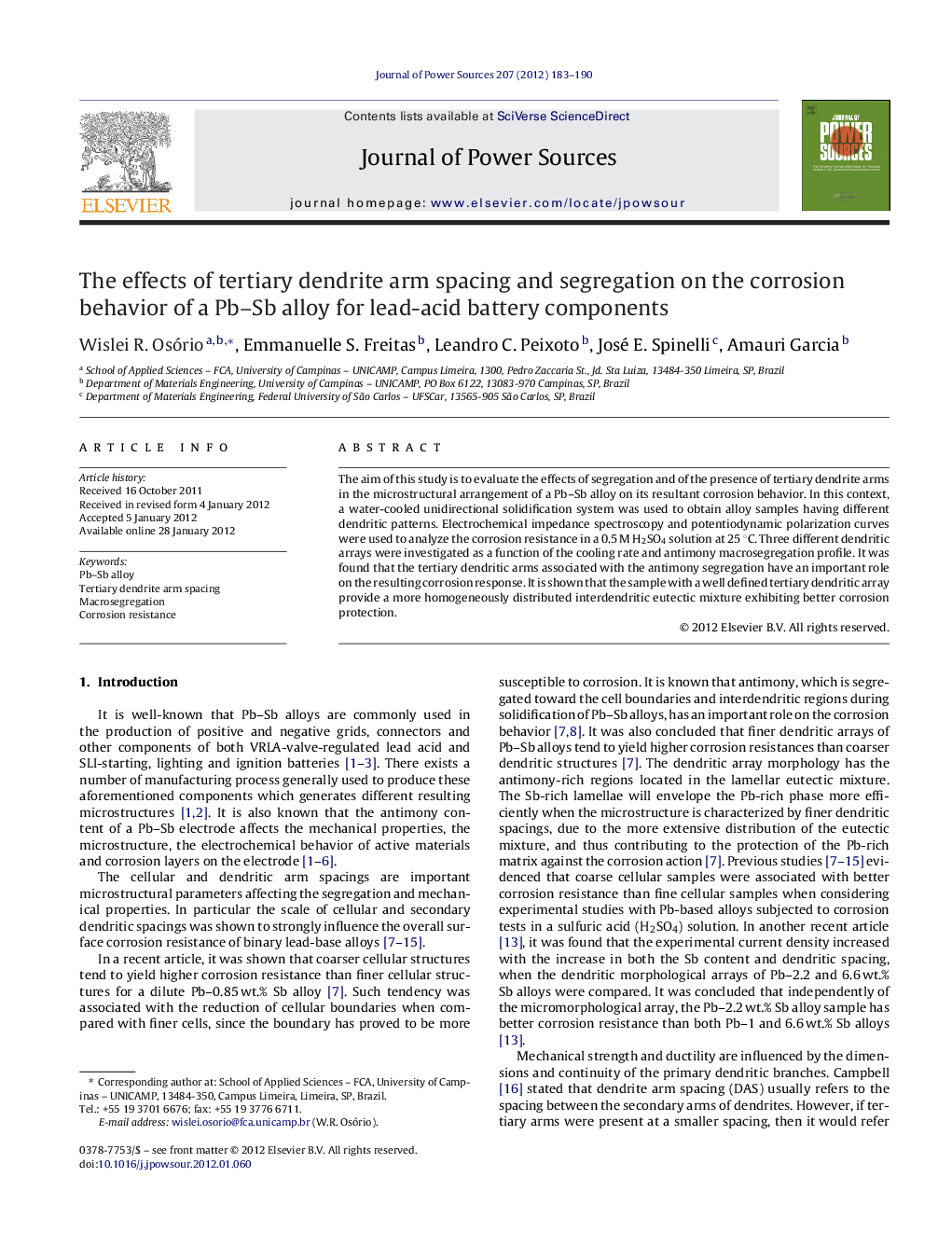| کد مقاله | کد نشریه | سال انتشار | مقاله انگلیسی | نسخه تمام متن |
|---|---|---|---|---|
| 1293036 | 1498025 | 2012 | 8 صفحه PDF | دانلود رایگان |

The aim of this study is to evaluate the effects of segregation and of the presence of tertiary dendrite arms in the microstructural arrangement of a Pb–Sb alloy on its resultant corrosion behavior. In this context, a water-cooled unidirectional solidification system was used to obtain alloy samples having different dendritic patterns. Electrochemical impedance spectroscopy and potentiodynamic polarization curves were used to analyze the corrosion resistance in a 0.5 M H2SO4 solution at 25 °C. Three different dendritic arrays were investigated as a function of the cooling rate and antimony macrosegregation profile. It was found that the tertiary dendritic arms associated with the antimony segregation have an important role on the resulting corrosion response. It is shown that the sample with a well defined tertiary dendritic array provide a more homogeneously distributed interdendritic eutectic mixture exhibiting better corrosion protection.
► The tertiary arms permit the eutectic mixture to be more homogeneously distributed.
► Tertiary arrays associated with the antimony segregation have an important role on corrosion.
► The Sb-rich phase envelopes the Pb-rich one protecting against corrosion.
Journal: Journal of Power Sources - Volume 207, 1 June 2012, Pages 183–190